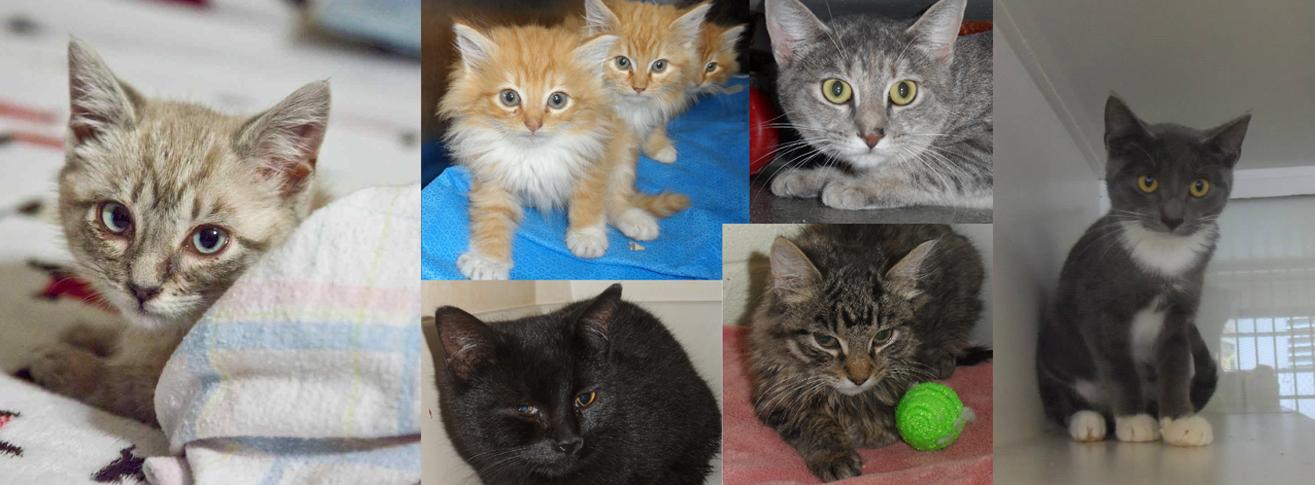Solutions to Cat-Related Issues
Whether you love or loathe community cats, trap/neuter/return (TNR) is the answer to effectively reducing the number of these cats. TNR reduces most cat-related nuisances, poses no threat to public health and safety, and keeps rodent control in place. Even so, cats living in our communities sometimes cause disputes between neighbors. What many people don’t realize is that these disputes can be resolved without resorting to legal means or killing of the cats. As with most disputes, it is important to look at both sides of the issue.
Cat caregiver side: Most of the time, the cat caregiver did not create the stray cat problem; rather, compassion toward animals prompted him/her to begin feeding hungry strays. Caregivers bond with the cats and value the cats’ lives tremendously, even though the cats are often not approachable by humans and would not make good pets. They may not have heard of TNR, and may not realize that resources are out there to help them get the cats fixed and resolve cat-related issues.
Complainant side: The cats are creating a legitimate nuisance: eliminating in gardens, yowling at night, spraying smelly urine. They have not bonded with the cats and they value their property tremendously. Complainants may not have heard of TNR, and may not realize that simply removing the cats will not solve the problem (since more cats will come). They may not realize that resources are out there to help keep cats off their property.
Unfortunately, many times disputes escalate to the point where people on both sides are angry, hurling insults and refusing to listen to each other. To resolve the dispute, both sides often need to first take a step back and listen patiently to the other party’s side. Instead of interrupting the other side when you disagree with what they say, write down their concerns and formulate a written plan that addresses the problem areas. There is a way to protect both the cats’ lives and people’s property. For more help with dispute resolution, get a neutral third party involved or try mediation.
Community cat caregivers can alleviate most nuisance behaviors simply by spaying or neutering the cats. No more smelly male urine, no more late-night howling, no more kittens!
Top cat-deterrent products
Some people just don’t want cats on their property. For these people, there are a number of humane cat-deterrent products they can try. Most of these products can be purchased online; lawn and garden supply stores may carry some of them.
Scarecrow: With this motion-activated sprinkler, an infrared sensor responds to motion and releases a three-second blast of water. The sprinkler, which “fires” 1,000 times on only one 9-volt battery, covers an area approximately 45 feet wide by 35 feet long. Search online or call Contech, the manufacturer, for the nearest retailer at (800) 767-8658.
CatStop: This deterrent uses a motion sensor and emits a high-pitched, ultrasonic alarm that can’t be heard by humans but will frighten most cats and small dogs. You place the unit facing the area you want to protect and it covers about 300 square feet. It requires a 9-volt battery, and can operate up to nine months with one battery. CatStop is a good choice for areas where children may be at play. Search online or call Contech, the manufacturer, for the nearest retailer: (800) 767-8658.
Cat Scat: This non-chemical cat and wildlife repellent consists of plastic mats that are pressed into the soil. Each mat has flexible plastic spikes that are harmless but effective. You can purchase this product at www.gardeners.com.
Shake-Away: This nontoxic granular deterrent contains the scent of fox, bobcat and coyote, animals that prey on cats. A 20-ounce bottle will cover 600 linear feet. One drawback is that it must be re-applied to remain effective. For more information, visit www.critter-repellent.com.
Other ideas for deterrents:
- Concrete pavers, river rocks, large pine cones, chicken wire (sharp edges down) or large bark can cover loose soil, discouraging cats from eliminating there.
- Plant the herb rue or coleus canina (scaredy-cat coleus), decorative plants that repel cats.
- Generously sprinkle cayenne pepper, coffee grounds, pipe tobacco, lemongrass oil, citronella oil, eucalyptus oil, or mustard oil on the ground to deter cats.
Whether you’re a community cat caretaker or neighbor looking for ways to keep cats out of your yard, we have put together a video that explores the most popular and inexpensive cat deterrents available. View cat deterrents video here.
Odor Control
To reduce the incidence of cats eliminating on neighbors’ properties, community cat caregivers need to either contain the cats or provide them with an appropriate place to do their business. Sometimes cat fencing can be used to keep the cats confined to a caregiver’s property, but cat fencing isn’t appropriate in all situations. So, caregivers should provide the cats with litter boxes and scoop them regularly. To make a large litter-box area, use plastic concrete mixers or a child’s sandbox.
One useful product for odor control is NaturVet Yard Odor Eliminator, available online at www.naturvet.com or by calling (888) 628-8783. It’s a nontoxic odor eliminator safe for use on grass, plants, patios, concrete, fences, or any other surface where pet odors are a problem.

